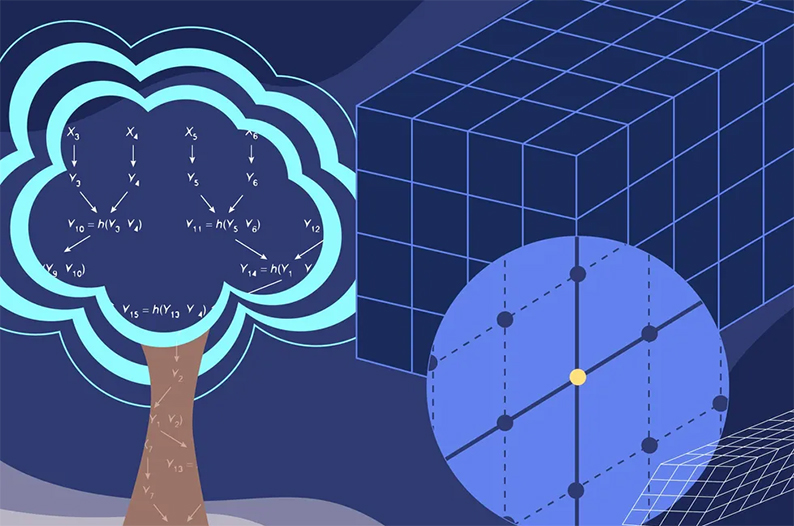NIST’s Quantum-Resistant Cryptography: Charting the Path to a Secure Future. In a world bracing for the advent of quantum computers, the National Institute of Standards and Technology (NIST) in the United States has taken a significant step toward ensuring a secure digital future. NIST recently unveiled its selections for the third round of the competition to establish new post-quantum cryptography (PQC) standards. These standards are designed to withstand the computational power of quantum processors, offering a promising route to safeguarding our digital world.
The NIST Announcement: A Multilayered Approach
NIST’s announcement unfolded in several layers, with the core focus on the primary algorithms chosen for PQC standardization. Among the standout selections were CRYSTALS-Kyber, tailored for key establishment, and CRYSTALS-Dilithium, designed for digital signatures. These algorithms share a common theoretical foundation, making them easier to implement in tandem. In addition to these, NIST also standardized the digital signature algorithms Falcon and SPHINCS+. Notably, NIST intends to continue researching and potentially standardizing additional algorithms in the upcoming fourth round of the competition.
The PQC Competition: A Complex Journey
NIST initiated the PQC competition in 2016, setting in motion a slow but steady evolution. The complexities of quantum-resistant cryptography necessitate thorough examination and validation. Algorithmic intricacies often take years to unravel, and potential vulnerabilities may remain hidden for extended periods. This cautious approach is evident in NIST’s choice of two winners alongside numerous runners-up or alternates.
A comprehensive evaluation process ensued after the second round of the competition in 2020. Seven algorithms were selected as finalists, with an additional eight designated as alternates. Academic experts, industry professionals, and government agencies, including the NSA, conducted rigorous assessments, probing for weaknesses and potential attacks.
The Motivation Behind PQC Standards
The impetus for PQC standards lies in the vulnerability of prevalent cryptographic algorithms to quantum computing threats. Algorithms such as RSA and Diffie-Hellman, widely used for digital signatures and key negotiation, rely on mathematical operations that quantum computers, specifically Shor’s algorithm, can efficiently exploit. Even cryptographic systems based on elliptic curves may face quantum-related challenges.
Introducing the CRYSTALS Algorithms
The crown jewels of the PQC standards, the CRYSTALS (Cryptographic Suite for Algorithmic Lattices) algorithms, derive their strength from the module learning with errors (MLWE) problem. MLWE involves discerning patterns within a set of data points, some of which may be distractors. This approach provides robust security, and notably, no known quantum algorithms can swiftly solve it. The CRYSTALS algorithms also harness elements from the “power-of-two cyclotomic ring,” facilitating speedy computation on conventional CPUs.
Exploring Falcon and SPHINCS+
Complementing the primary selections, Falcon offers smaller digital signatures, catering to applications where size matters. SPHINCS+, a stateless, hash-based algorithm, stands apart by leveraging existing standard hash algorithms. This diversity ensures a backup solution in case of unforeseen vulnerabilities, as SPHINCS+ does not rely on lattice-based mathematics.
Four Algorithms Continue the Journey
As the competition advances to its fourth round, four algorithms remain under scrutiny: Bicycle, Classic McEliece, HQC, and SIKE. Although they may not become the primary standard, these alternatives aim to encourage experimentation and testing. Each of these algorithms is based on distinct mathematical problems, providing redundancy against potential threats to the main choices.
Future Prospects and Security Implications
The PQC standards offer security professionals a glimpse into the future of cryptography. While immediate action may not be necessary, forward-thinking security teams can begin incorporating these standards into their long-term strategies. Architects and engineers can consider integrating these algorithms into their designs, fortifying their systems against quantum threats.
The security landscape remains ever-evolving, and the pace of quantum hardware development is not as alarming as once speculated. However, the PQC competition serves as a vital preparation phase, nurturing new algorithms and approaches to reinforce existing protocols. These standards represent a proactive stance against future vulnerabilities, ensuring that our digital world remains secure in the era of quantum computing.
NIST’s commitment to quantum-resistant cryptography is a significant milestone in the quest for a secure digital future. The PQC standards, anchored by the CRYSTALS algorithms, signify the resilience and innovation of the cybersecurity community. As the competition progresses, it promises to deliver a robust framework for safeguarding our digital world, ensuring that our cryptographic systems remain impervious to the looming quantum revolution.

